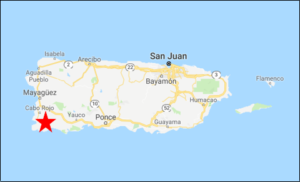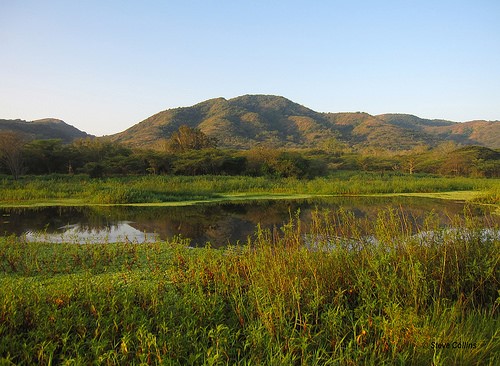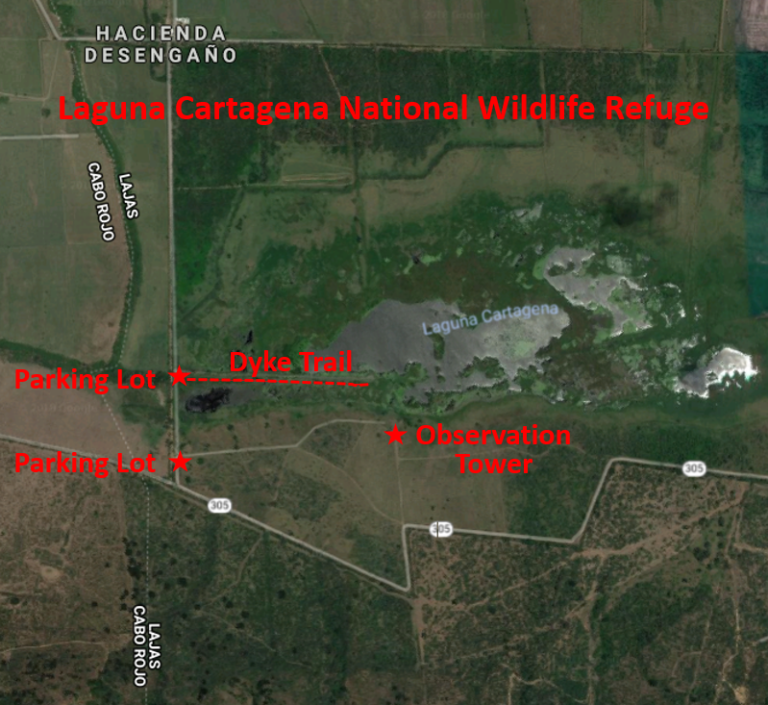Laguna Cartagena National Wildlife Refuge, Puerto Rico

Probably the most productive freshwater wetland on Puerto Rico, Laguna Cartagena bursts with birds year-round. It is particularly good for two uncommon duck species: with thriving resident flocks of West Indian Whistling-Duck and Masked Duck—the global high count of 140 were observed here on February 5, 2012.
Orientation
Directions
Laguna Cartagena is in the Lajas Valley, an agricultural zone in southwestern Puerto Rico, about two hours’ drive (175 km) southwest of San Juan, 50 minutes (70 km) west of Ponce, or 35 minutes (30 km) south of Mayagüez.
The south end of Ecclesdown Road is about two-and-a-half hours’ drive (90 km) east of Kingston. When arriving from the south, the productive part of Ecclesdown Road begins about 12 km up the road.
From Ponce. Take PR-2 about 30 km west of Ponce and exit onto PR-116 toward Guánica. Remain on PR-116 for 21 km, then turn left onto PR-202. After 2.3 km you will reach PR-303. Continuing west from this junction, PR-305 leads straight to Laguna Cartagena, but DO NOT TAKE THIS ROAD.
Instead, turn right (north) onto PR-303 for 2.5 km, then turn left onto PR-101. After 3.7 km you will reach a Top Fuel gas station on the right. Directly opposite the gas station is a small dirt road that leads to the refuge.
This road passes through the middle of a farmyard called Hacienda Desengaño. Pass through the farmyard and the greenery of the refuge will begin on the left side of the road. Continuing south for a little over 1 km will bring you to the two main access points to Laguna Cartagena.
From Mayagüez. Take PR-100 toward Boquerón. After 15 km, turn east onto PR-101 and go 6 km, passing through Betances, to reach the Top Fuel gas station. Turn right onto the small dirt road opposite the gas station to reach the refuge.

Laguna Cartagena.
Birdfinding
The two main access points to the refuge are near the southwestern tip of the lake. Both have small parking lots and signs.
Dyke Trail. The first parking lot gives access to an old road that juts 500 m into the lake. This is by far the best option for observing wetland birds. The old road is elevated, like a dyke, affording an excellent view into a mix of marsh and open water on both sides.
Several species of heron are usually in view, with Green Heron being abundant and Least Bittern fairly common. Yellow-breasted Crake is a possibility in marshy patches adjacent to the dyke, but most of the rallids will be Common and Purple Gallinules. Swimming birds typically include West Indian Whistling-Duck, White-cheeked Pintail, Masked Duck, and “Caribbean Coot,” among others.

Access points to Laguna Cartagena.
If you arrive first thing in the morning, a large flock of West Indian Whistling-Ducks may be assembled on the dyke before dispersing across the lake. Masked Ducks can usually be found in areas of floating vegetation.
The dyke also provides grassy edge habitat for finches, and an impressive number of exotic species can be found, including: Northern Red Bishop (common), Orange-cheeked Waxbill (abundant), Bronze Mannikin, Indian Silverbill, Scaly-breasted Munia, Chestnut Munia, and Pin-tailed Whydah.
Tower Trail. The second parking lot gives access to the terrestrial habitats of the refuge, as well as an observation tower that overlooks the lake.
Unfortunately, the lake has receded and the observation tower is now set back from the shore by a considerable distance (> 50 m), which makes it essentially useless for observation of waterbirds. With powerful optics, visitors can often discern West Indian Whistling-Ducks from the tower—but the view is much better from the dyke.
In addition to the lonely tower, service roads wind across open fields and beside brushy areas that can be productive (particularly if you are fond of doves). Some of the less widely common species that occur regularly include Mangrove Cuckoo, Caribbean Elaenia, Puerto Rican Flycatcher, and Puerto Rican Oriole.
Services
Accommodations
…
Food
…
Notes
…